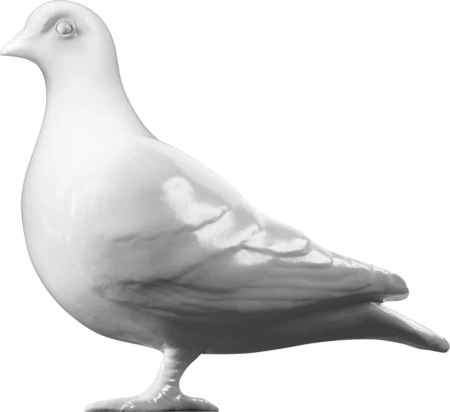Fashion — 1921
Carabosse the Wicked Fairy
This heavy skirt was designed by Léon Bakst as part of the costume for the role of Wicked Fairy Carabosse in The Sleeping Princess. The costume is beautifully made and was most likely made in Paris by Madame Muelle. This long velvet skirt is bordered in silver with gold embroidery and brass ball buttons down the front. The surface is sewn with gold stars and applique silver lamé discs embroidered in black, suggesting moon faces, alternately comic and sad. It may have been worn with an underskirt to ensure its shape, but this has been lost.
The role of Carabosse in 1921/22 was performed by Carlotta Brianza, b. 1867- d. 1933. Brianza was an Italian premier ballerina who had been chosen by Marius Petipa to dance the role of Aurora in the first production of Sleeping Princess in 1890. This costume was also worn by Maestro Enrico Cecchetti on the 5th of January 1922, to mark the anniversary of his fiftieth year as a dancer. Cecchetti had created the role of Carabosse in 1890 production.
In 1921 Serge Diaghilev staged a reconstruction of the Imperial Theatre’s The Sleeping Beauty. This ballet had been choreographed in 1890 by Marius Petipa to the music of Tchaikovsky. Inspired by the success of the long-running musical Chu Chin Chow, Diaghilev hoped that The Sleeping Princess, as he renamed it, would run forever. It was a hugely ambitious project. Diaghilev secured the Alhambra Theatre, London and the financial backing of Sir Oswald Stoll to the tune of over £20,000. He employed Nicolas Sergeyev, the former régisseur of the Mariinsky, to stage Petipa’s choreography. Diaghilev altered the score with additions from The Nutcracker and other ballets, and employed Bronislava Nijinska to create additional choreography. The full length ballet was divided into five scenes, The Christening, The Spell, The Vision, The Awakening and The Wedding
Léon Bakst was commissioned to design the opulent costumes and sets. In just over three months, a staggering six changes of complex set and nearly 300 individual costumes were made for Diaghilev’s most ambitious project to date. No expense was spared with even the costumes for minor roles being exquisitely crafted. The costumes were made between workshops in Paris and London with many constructed by Bakst’s preferred costume maker, Mme Muelle, in Paris.
The Sleeping Princess opened on the 2nd of November, 1921. A full-length ballet was a new experience for London audiences, and initially was a great success. The production needed to run for six months in order to break even. After the New Year, sales began to drop and on the 4th of February, 1922, after 105 consecutive performances, The Sleeping Princess closed. Despite the work’s perceived failure, it remains one of the longest-running ballets ever performed on the West End.
Stoll seized the sets and costumes in lieu of the outstanding debt, and the company was given a month’s leave. The costumes were stored under the stage of the Coliseum. Diaghilev was eventually able to settle the debt and buy back the costumes in 1925, but he had moved on artistically and only some costume from Scene V were used again. The majority of the surviving costumes were sold in a renowned auction at Sotheby’s, London, in 1968, and the remainder in 1973. The costumes in the MOL’s collection were purchased in 1968.
- Category:
- Fashion
- Object ID:
- 68.88/1b
- Object name:
- Carabosse the Wicked Fairy
- Object type:
- Artist/Maker:
- Bakst, Léon
- Related people:
- Related events:
- Related places:
- Production date:
- 1921
- Material:
cotton, silk, metal
- Measurements/duration:
- L (centre front) 950 mm, L (centre back) 1015 mm, CM (waist) 710 mm
- Part of:
- —
- On display:
- —
- Record quality:
- 100%
- Part of this object:
- —
- Owner Status & Credit:
Permanent collection
- Copyright holder:
digital image © London Museum
- Image credit:
- —
- Creative commons usage:
- —
- License this image:
To license this image for commercial use, please contact the London Museum Picture Library.

